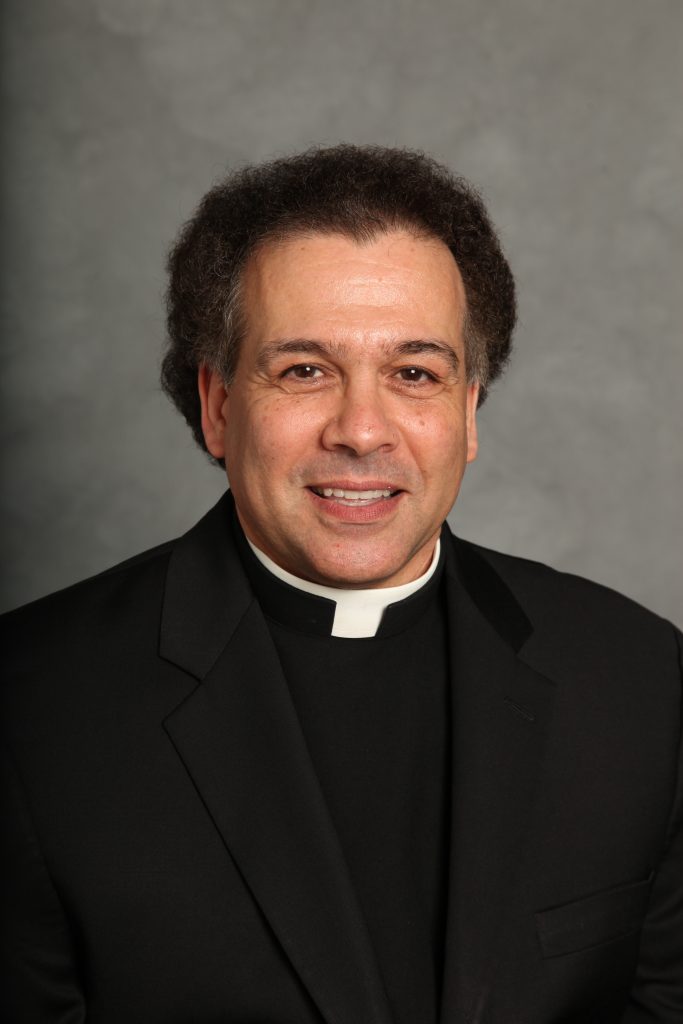Latest News | October 29, 2020
A Promise.
By Monsignor Gregory Mustaciuolo, CEO of the Mother Cabrini Health Foundation

Nothing changes your perspective on oral health more than taking a seat in a dentist’s chair.
I learned that the hard way recently.
After chipping a tooth on a bialy, I confronted my lifelong fear of dentists and scheduled an emergency visit. It was painless and successful. Not only did I realize that my fear was unfounded, I also returned home with a renewed appreciation for the vital importance of oral health services.
As CEO of the Mother Cabrini Health Foundation, I’ve been part of discussions this summer about what our charitable foundation can do to best invest in communities across New York State to achieve measurable impacts over time.
In our first round of grants last winter, our Foundation awarded nearly $150 million to over 500 charitable activities, programs, and initiatives in 2020 to improve health and human services across the State.
When we saw the need created by the pandemic in March, we quickly awarded an additional $50 million in emergency funding for projects that ranged from supporting frontline workers, food banks and shelter providers’ ability to care for New York’s most vulnerable populations, to assisting clinics as they administered care to individuals with COVID-19.
Now, planning for our 2021 grants, we are taking a hard look at where to put dollars behind the healthcare delivery system and infrastructure of New York State – which has long been recognized as among the nation’s finest.
In these first years of our Foundation’s existence, I’ve seen evidence of excellence and innovation in New York’s world-class teaching hospitals and academic medical centers and in many on-the-ground community health centers and mobile health programs.
Over the past decade, New York State has achieved unprecedented levels of health insurance coverage. But a closer look reveals significant fissures in the State’s health system. That is to say, health coverage is not equivalent to health access.
New York’s economically disadvantaged and chronically underserved populations experience significant, persistent health access barriers. Their vulnerability, brought into bold relief during the pandemic, can be mitigated, in part, by addressing these barriers.
Let’s start with oral health.
Good oral health is the gateway to good overall health. Growing research shows that poor oral health, especially gum disease, leads to chronic diseases, including diabetes, heart disease, and stroke. These diseases can in turn reduce the body’s resistance to infection. Yet lack of access to dental care persists within disadvantaged and underserved populations across New York. Just 32% of Medicaid enrollees in the State have had at least one dental visit over two years. According to a Pew Foundation report, New York ranks near the bottom nationally on whether low-income children are likely to receive dental care.
Pew also reports U.S. Health Resources and Services Administration data on expected shortages of dentists, listing New York as one of three states with the greatest expected deficits. Meanwhile, a State University of Albany School of Public Health report notes that one challenge in New York in combatting oral health disparities is that a relatively small number of dentists, fewer than half in the State, actively participate in Medicaid.
Combine this with a lack of access to transportation resources in many communities, particularly those in rural areas. The result? Missed appointments for routine care, increased incidences of untreated chronic conditions, increased use of emergency care, and unnecessary and preventable procedures and hospitalizations.
As I sat in my dentist’s chair recently, I thought of many things: how dentistry has advanced since I was a child, how vital it is to have access to a dentist near where I live, how important good oral health is to my overall well-being, and how lucky I and so many others are to have healthcare insurance to cover or reduce the cost of treatment.
Oral healthcare is without doubt one of the foundational components of quality, comprehensive primary care. Ensuring that underserved populations have access to high-quality oral health services will reduce the incidence of preventable dental problems, oral health disease, costly dental emergencies, and improve overall health.
Look for our Foundation to factor this into our 2021 grantmaking.
If we can develop and deploy replicable program models that improve access to primary oral healthcare in underserved communities across New York State… upstate, downstate, urban and rural… we can positively impact the lives of children, older persons, low-income individuals and families, racial and ethnic minorities, and people with special needs.
These are the populations our Foundation’s namesake devoted her life to serving.
As appropriate as it is to honor Mother Cabrini with a statue, what better testament could there be to her legacy in New York than thousands upon thousands of healthy smiles?
